In today’s digital era, where online businesses thrive, conversion rate optimization has become an essential aspect of success. A high conversion rate is crucial for businesses as it directly impacts their revenue and growth. In this blog, we will delve into the significance of conversion rates, how to calculate them, what constitutes a good conversion rate, the factors affecting it, and 10 effective strategies to improve it.
The Importance of Conversion Rate for Your Business
The conversion rate totals the percentage of visitors who take a desired action after entering your website, like making a purchase, filling out a form, or subscribing to a newsletter. It offers insights into the effectiveness of your marketing efforts and user experience. A higher conversion rate means more customers, increased sales, and improved profitability. It helps you make informed decisions, optimize your marketing campaigns, and identify areas for improvement in your sales funnel.
- Generating Revenue
Achieving a high conversion rate results in a greater number of customers taking desired actions, such as making purchases, signing up for services, or becoming subscribers. As a result, your business experiences a direct increase in revenue and overall growth. However, it is important to note that a high conversion rate on low-quality leads can have detrimental effects on your business. Therefore, regularly assessing the quality of your leads is essential to adjust and optimize your marketing efforts accordingly.
- Cost Efficiency
Improving this factor allows you to maximize the effectiveness of your marketing budget. By converting a greater percentage of your website visitors or leads into customers, you can optimize your return on investment and reduce customer acquisition costs. For instance, if you spend $1,000 to attract 10,000 readers who generate 100 click-throughs, resulting in a conversion rate of only 1%, you end up paying $10 for each conversion. However, by increasing click-throughs to 200, your conversion rate improves to 2%, effectively reducing the cost per conversion to $5.
- Performance Evaluation
It serves as a measurable metric to analyze how effective your marketing campaigns, landing pages, and overall user experience have been. It enables you to identify areas for improvement and optimization, allowing you to refine your strategies and achieve better results over time.
- Customer Insights
Analyzing this element provides valuable insights into customer behavior, preferences, and pain points. This deeper understanding helps you tailor your marketing campaigns, messaging, and offerings to positively impact more customers. By knowing your audience through conversion rates, you can better address their needs and increase the likelihood of converting prospects into paying customers.
- Competitive Advantage
A higher conversion rate gives you a significant competitive edge within your industry. It signifies that you provide a compelling value proposition and deliver an exceptional customer experience, setting you apart from competitors. Ultimately, a good conversion rate means successfully converting more prospects into paying customers, which directly leads to increased revenue and business growth.
How to Calculate Your Conversion Rate
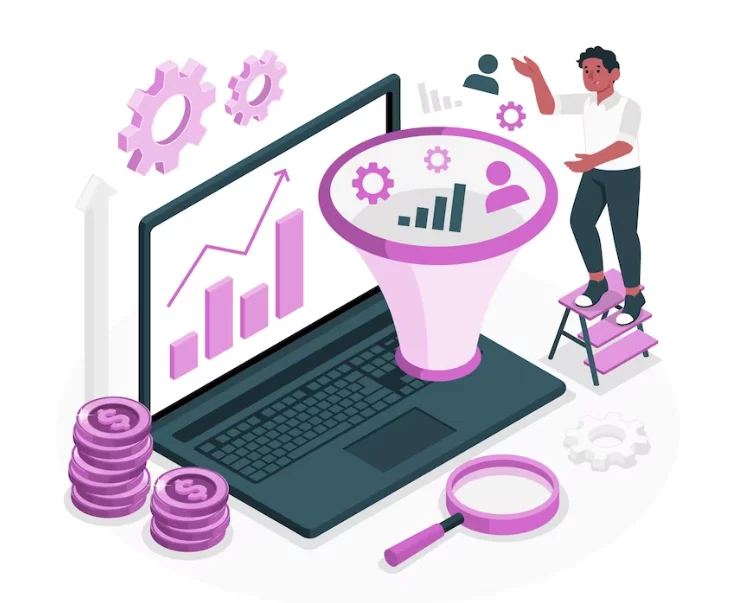
Calculating your conversion rate is relatively simple. Use the following formula:
Conversion Rate = (Number of Conversions / Number of Visitors) * 100
For example, if you had 500 conversions from 10,000 visitors, your conversion rate would be (500 / 10,000) * 100 = 5%.
- Sales Conversion Rate: Conversion Rate = (Number of Sales / Number of Visitors) * 100
- Website Conversion Rate: Conversion Rate = (Number of Conversions / Number of Website Visitors) * 100
- Subscriber Conversion Rate: Conversion Rate = (Number of Subscribers / Number of Website Visitors) * 100
- Lead Generation Conversion Rate: Conversion Rate = (Number of Leads / Number of Visitors to the Opt-in Form) * 100
- Email Conversion Rate: Conversion Rate = (Number of Click-throughs or Purchases / Number of Email Recipients) * 100
- Marketing Ad Conversion Rate: Conversion Rate = (Number of Clicks or Purchases / Number of Ad Views) * 100
Calculating these rates permits you to measure the effectiveness of specific actions or campaigns and determine their impact on your overall business goals. It enables you to identify areas for improvement and make data-driven decisions to optimize your marketing strategies and improve your conversion rates.
What Is a Good Conversion Rate?
The notion of a “good” conversion rate varies across industries and business models. Factors such as the complexity of the product or service, the target audience, and the stage of the sales funnel can influence the benchmark. However, in general, a conversion rate of 2-5% is considered average, while 10% or higher is excellent. It’s essential to compare your conversion rate against industry standards and your own historical data to gauge success.
Factors Affecting Conversion Rate
- Website Design and User Experience: A visually appealing, user-friendly website with clear navigation and intuitive interfaces helps build trust and improves conversions.
- Compelling Content: Engaging, persuasive, and relevant content can influence visitors to take the desired action.
- Call-to-Action (CTA): The placement, design, and wording of your CTAs greatly impact conversion rates. Make them clear, concise, and compelling.
- Loading Speed: Slow-loading pages deter visitors and increase bounce rates. Optimize your website for faster loading times.
- Mobile Responsiveness: With the rise of mobile browsing, make sure your website is mobile-friendly and provides a seamless experience across devices.
- Trust and Credibility: Displaying trust signals, such as customer reviews, security badges, and certifications, instills confidence in visitors.
- Pricing and Incentives: Competitive pricing, discounts, and incentives can motivate visitors to convert.
10 Ways to Improve Your Conversion Rate
1. Optimize Website Speed
Website speed is a critical factor in user experience and conversions. Slow-loading pages frustrate visitors and lead to higher bounce rates. To optimize website speed, you can compress images without sacrificing quality, minify and combine CSS and JavaScript files, leverage browser caching, and use a content delivery network (CDN). You can check your website speed using some website speed tools and then take action. By implementing these techniques, you can create a faster and more responsive website, reducing the likelihood of visitors abandoning your site.
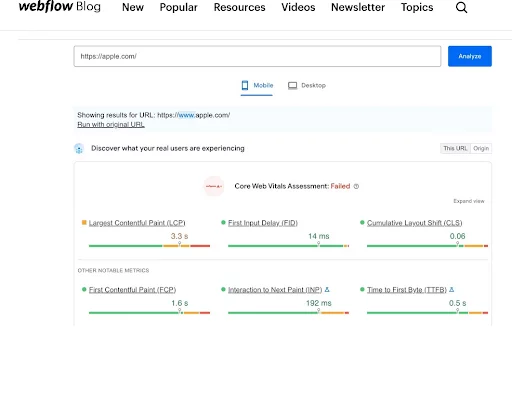
Example: Suppose you run an online fashion store. By optimizing your website speed, you significantly reduce the time it takes for your product images and pages to load. As a result, visitors can quickly browse your collections and make purchase decisions without any frustrating delays, leading to improved conversion rates.
2. Implement Clear Call-to-Actions (CTAs):
Clear and compelling CTAs direct visitors toward the desired action, like making a purchase, signing up for a newsletter or downloading an e-book. Effective CTAs use contrasting colors, prominent placement, and persuasive wording to catch users’ attention. Additionally, using action-oriented verbs like “Buy Now,” “Sign Up,” or “Get Started” can create a sense of urgency and encourage conversions.
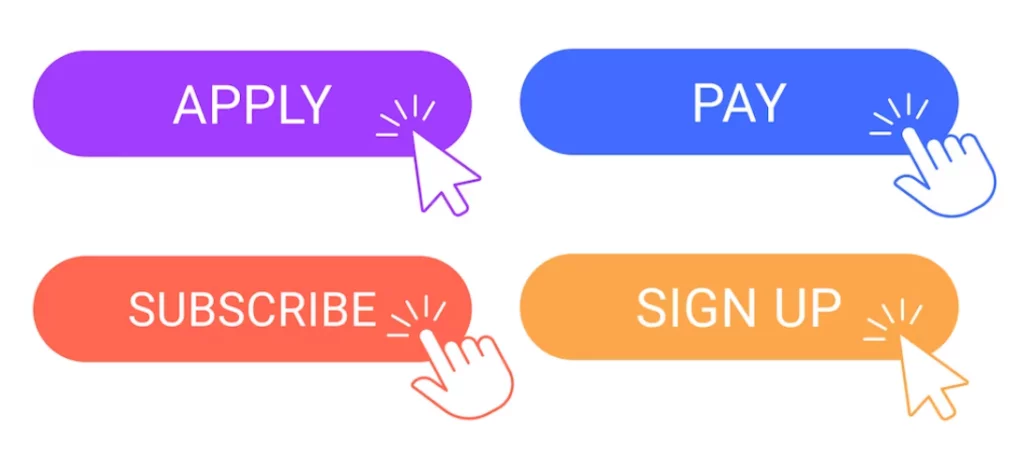
Example: Imagine you’re operating a software-as-a-service (SaaS) company. Placing a bold, well-designed “Start Your Free Trial” button prominently on your homepage can drive visitors to sign up and experience your software. The clear CTA communicates the next step you want users to take, increasing the likelihood of conversions.
3. Enhance Website Design and User Experience (UX):
A visually appealing and user-friendly website design is crucial for engaging visitors and encouraging conversions. Improve the overall UX by organizing information into clear sections, using intuitive navigation menus, and employing consistent branding elements. Prioritize readability by choosing legible fonts, appropriate font sizes, and appropriate color contrasts. Additionally, ensure that your website is mobile-responsive to provide a seamless experience across different devices.
Example: Suppose you operate a consulting agency. By adopting a clean and professional design, your website becomes more visually appealing and reflects the quality of your services. Clear navigation, intuitive information architecture, and an overall user-friendly experience will make it easier for potential clients to find relevant information and contact you, resulting in higher conversion rates.
4. Optimize Landing Pages
Landing pages play a vital role in driving conversions, especially when running specific marketing campaigns. Tailor each landing page to match the messaging and offer of your campaign. Keep the content focused, use persuasive copy, and include relevant visuals that highlight the benefits of your product or service. By aligning the landing page with the campaign’s objectives, you can increase the likelihood of conversions.
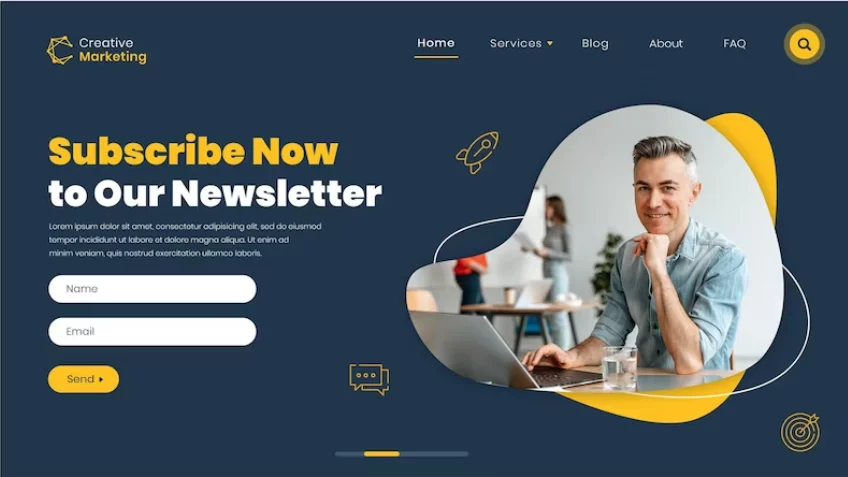
Example: Consider you’re promoting a fitness app with a limited-time discount offer. Create a dedicated landing page highlighting the app’s features, success stories, and discount codes. The landing page’s design and messaging should convey a sense of urgency and the value users will gain from using the app. This focused approach encourages visitors to convert and take advantage of the limited-time offer.
5. Leverage Social Proof
Social proof is a powerful tool for building trust and credibility with your audience. Display positive reviews, testimonials, case studies, or user-generated content to show that others have had positive experiences with your product or service. Testimonials with specific details and customer photos/videos are particularly effective. This social proof reassures potential customers and increases their confidence in making a purchase or taking the desired action.
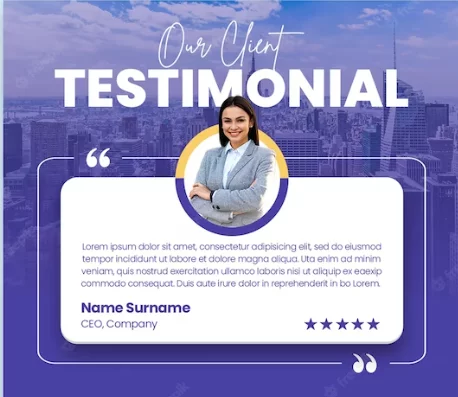
Example: Suppose you operate an online booking platform for vacation rentals. Showcase genuine reviews from previous guests alongside their profile pictures. These testimonials can highlight the positive experiences guests had while staying at the properties, helping new visitors trust your platform and increasing the likelihood of them converting by booking their vacation through your website.
6. Implement Exit-Intent Pop-ups
Exit-intent pop-ups are triggered when a visitor shows intent to leave your website, such as moving their cursor toward the browser’s close button. These pop-ups offer an opportunity to re-engage visitors with compelling offers, discounts, or valuable content. By providing an enticing reason for visitors to stay or leave their contact information, you can capture leads and potentially convert them later.

Example: Imagine you operate an e-commerce store. When a visitor shows exit intent, you can display a pop-up offering a discount code or a free e-book related to their interests in exchange for subscribing to your newsletter. By capturing their email address, you can continue to engage with them through email marketing and increase the chances of conversion.
7. Offer Live Chat Support
Live chat support allows visitors to receive immediate assistance and resolve any concerns or questions they may have. By providing real-time support, you enhance customer experience and build trust. Visitors are more likely to convert when they feel supported, and their queries are promptly addressed. To use this feature, you can make use of live chat software to leverage your business needs.

Example: Suppose you run an online software company. By incorporating a live chat feature on your website, visitors can inquire about specific product features, pricing, or any technical issues they encounter. A live chat representative can provide personalized assistance, answer questions, and guide visitors toward making a purchase decision, resulting in improved conversion rates.
8. Streamline Checkout Process
A complicated or lengthy checkout process often leads to cart abandonment. Streamline the process by reducing the number of steps and minimizing form fields. Implement a guest checkout option to eliminate the requirement of creating an account. Offer multiple secure payment options and prominently display trust symbols (e.g., SSL certificate, payment provider logos) to instill confidence in your customers.
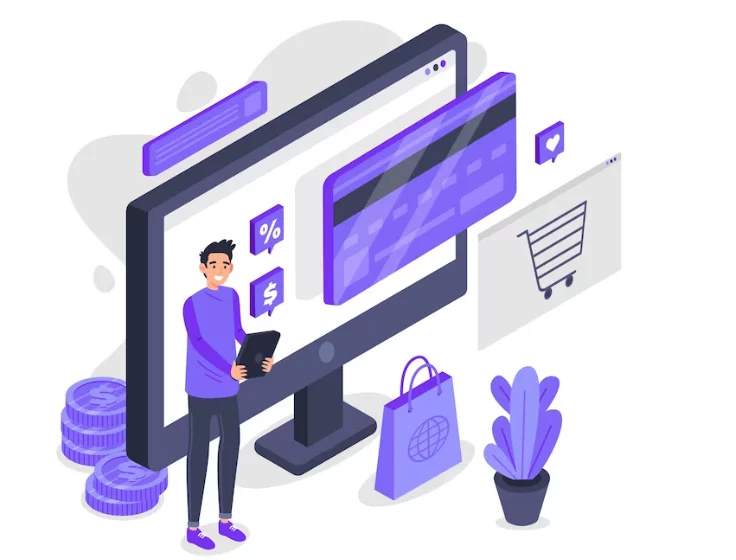
Example: Consider you operate an online fashion store. Simplify the checkout process by enabling guest checkout, allowing customers to make a purchase without creating an account. Display a progress indicator to show customers the number of steps remaining and provide a summary of their cart before payment. By minimizing friction and offering a seamless checkout experience, you can multiply the conversion rates and reduce cart abandonment.
9. Personalize Content and Recommendations
Leverage data and user behavior to deliver personalized content and product recommendations. Use algorithms and machine learning to analyze users’ browsing history, purchase patterns, and demographic information. By presenting visitors with relevant content and personalized product suggestions, you increase the chances of conversion by catering to their particular needs and preferences.
Example: Suppose you run an e-commerce store selling beauty products. Implement a recommendation engine that suggests products based on the user’s previous purchases, browsing history, and customer reviews. By offering personalized recommendations for skincare or makeup items, you can enhance the shopping experience and increase the likelihood of conversions.
10. Conduct A/B Testing and Analytics
Regularly perform A/B testing to compare different variations of elements on your website and landing pages. Test variables such as headlines, images, CTAs, colors, layouts, and page copy. Analyze the data collected through analytics tools to understand which variations perform better in terms of conversion rates. By making data-driven decisions based on A/B test results, you can continuously optimize your website and increase conversions.

Example: Imagine you run an email marketing platform. A/B tests different subject lines for your email campaigns to determine which ones yield higher open and click-through rates. By analyzing the data, you can identify the subject lines that resonate better with your audience and ultimately improve the conversion rate of your email campaigns.
Examples of High Conversion Rate Websites
- HubSpot boasts an impressive 11.4% average conversion rate, specifically for its landing pages, which are skillfully crafted to transform visitors into valuable leads. Employing a diverse range of techniques, HubSpot employs clear and succinct calls to action, compelling visuals, and persuasive copy to continuously enhance its conversion rates.
- Netflix achieves a 5% average conversion rate on their free trial signup page, effectively turning visitors into paying customers. To enhance this conversion rate, Netflix employs various strategies, including presenting a clear and concise offer, instilling a strong sense of urgency, and leveraging social proof.
- Amazon has a 10% of average conversion rate on their product pages, effectively transforming visitors into customers. To enhance this conversion rate, Amazon employs several strategies, including employing concise and comprehensive product descriptions, featuring high-quality images, and showcasing positive customer reviews.
- LinkedIn’s free signup page has a conversion rate of 2.4%. This page is skillfully crafted to effectively transform visitors into registered users. To achieve this, LinkedIn employs various tactics, including a compelling and straightforward offer, a sense of urgency that compels action, and the strategic use of social proof.
- The paywall implemented by The New York Times aims to convert visitors into paying subscribers and records an average conversion rate of 3.7%. The newspaper employs various strategies to enhance this Rate, including a well-defined and succinct offer, a compelling sense of urgency, and tailored recommendations for each individual user.
Conclusion
A high conversion rate is pivotal for the success and growth of your business. By understanding the importance of conversion rates, calculating them accurately, identifying the factors that influence them, and implementing effective strategies to improve them, you can optimize your online presence, increase conversions, and boost your bottom line. Stay proactive, test, and iterate to find what works best for your audience, and watch your business flourish.
FAQs
How long does it take to see improvements in conversion rates?
The timeline for seeing improvements in conversion rates can change depending on multiple factors, such as the specific strategies implemented, the industry, the target audience, and the size of your business. In some cases, you may see noticeable improvements within a few weeks, while in others, it may take several months to observe significant changes. It’s important to be patient, monitor the results, and make iterative improvements based on data and insights.
How frequently should I track and analyze my conversion rates?
It’s recommended to track and analyze your conversion rates regularly, ideally on a weekly or monthly basis. By consistently monitoring your conversion rates, you can identify trends, spot areas for improvement, and make timely adjustments to optimize your conversion strategies.
Should I focus on increasing traffic or improving the conversion rate?
Both increasing traffic and improving conversion rates are important. However, focusing solely on increasing traffic without optimizing your conversion rate can result in missed opportunities and wasted resources. It’s crucial to strike a balance by attracting relevant traffic and continuously improving your conversion rate to maximize your business’s success.



